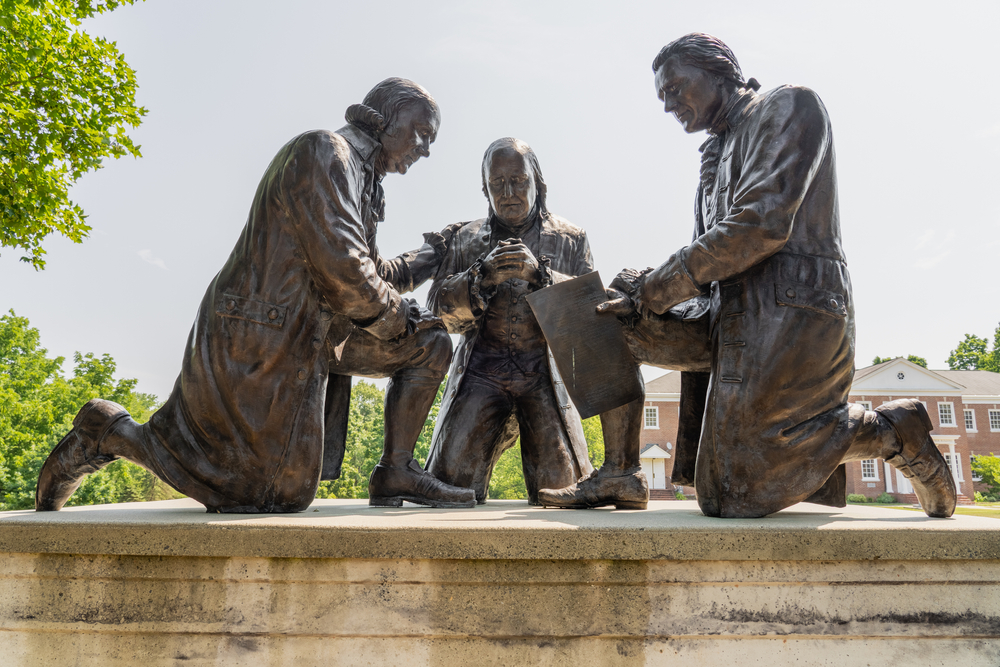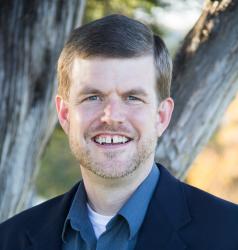The religion clauses in the First Amendment are among the most hotly debated topics in constitutional law and history. Unfortunately, the records of the Founders don’t always offer much help in elucidating their meaning. The congressional debates over the religion clauses can be especially exasperating to scholars. The framers in the First Congress lurched from one draft wording to another, often leaving no clues as to why they changed one word or phrase to another.
My personal choice for the most laughably exasperating moment in the records comes from Rep. Samuel Livermore of New Hampshire, who rose to object to one proposed version of the Establishment Clause. He prefaced his comments, however, by noting that he did not want House members to “dwell long on the subject.” Presumably they had more important things to do. This was only the First Amendment they were framing, after all!
Vincent Phillip Muñoz’s lucid Religious Liberty and the American Founding: Natural Rights and the Original Meanings of the First Amendment Religion Clauses provides one of the best treatments we have on the meaning of the religion clauses, despite the sometimes unclear records of their development. He delivers a compelling analysis of the state constitutional debates and their various comments about religious liberty. So much attention is given to the federal Constitution that one might forget that there were many more debates—often well-documented ones—about establishments and religious freedom in the states. These debates, and the views of a spectrum of Founders, allow Muñoz to craft a convincing argument. He contends that the founding generation’s concept of religious liberty was rooted, first and foremost, in natural law and inalienable natural rights.
People involved in American political life in the late 1700s disagreed vehemently about the proper approach to church-state separation. But Muñoz shows that there was near-universal agreement among people of widely differing faiths and ideologies on religious liberty as an inalienable natural right. A “natural” right was one not granted by government or by any human authority. Such rights were part of the natural order; they resulted from principles derived from “the laws of nature and nature’s God,” as the Declaration of Independence put it. These rights were “inherent” in the sense that they inhered in human nature, and all people rightfully enjoyed them. James Wilson, one of the era’s most distinguished legal minds, wrote that “the natural rights and duties of man belong equally to all. Each forms a part of that great system, whose greatest interest and happiness are intended by all the laws of God and nature.”
Religious liberty was an “inalienable” right in the sense that people do not, and fundamentally cannot, grant power over such a right to the government. Religious freedom was not an unlimited right, of course. One cannot use religion as an excuse to violate other people’s fundamental rights. The government should not allow murder, for example, even if the murderer claims that God told them to do it.
There was less agreement on church-state separation, particularly in the states, than on the concept of religious liberty. Muñoz divides the Founders into two main camps on this issue: the “expansive liberals” and “narrow republicans.” (I don’t especially like the second term, which sounds pejorative. He could just as easily have called them “expansive republicans.”) Liberals such as Jefferson and Madison, as well as many evangelical Baptists, wanted to sharply limit the scope of state jurisdiction with regard to religion. They did not want the states (much less the national government) to fund any denomination with taxes, nor did they want a person’s beliefs or religious practices to affect their civil or political privileges. Christian republicans such as Patrick Henry and John Adams preferred to maintain traditional state support for a particular denomination. By the mid-1780s, Henry conceded that the Anglican/Episcopal Church would no longer serve as the uniquely established church in Virginia. Henry proposed instead that the state should require religious taxes but allow a taxpayer to choose the church to receive the funds. Other Christian republicans affirmed religious tests, such as requiring officeholders to profess belief in God and the Bible. Both the liberals and the republicans believed that their approach protected and bolstered the people’s natural right to religious liberty. They clashed over the best means to accomplish that agreed-upon end.
Muñoz’s analysis demonstrates that while there was widespread agreement on the “free exercise of religion,” it was less clear in 1791 (when the Bill of Rights was adopted) what exactly an “establishment” of religion would entail. This became an especially perplexing issue starting in the mid-20th century. In 1791 there seemed to be broad consensus that the states could decide for themselves how to handle church-state relations, including whether to maintain tax funding for a church. Twentieth-century courts’ application of the First Amendment to the states via the Fourteenth Amendment (1868)—known as the principle of “incorporation”—has, for better or worse, rendered moot the Founders’ federal-state distinction on establishment.
Despite the First Amendment’s lack of precision about the definition of an establishment, Muñoz reasonably infers that two main types of religious activities or “relationships” are unavailable to the government under the First Amendment: “state” and “church” establishments. Under “state” establishments, the government itself would exercise functions as if it were an institutional church, including the “regulation of internal church matters such as the content of doctrine and the selection of ministers.” “Church” establishments would entail delegating coercive authority to churches, especially allowing them to collect taxes. While direct tax funding of churches has ceased to be a live possibility, indirect support includes church-related or clerical tax exemptions, or assistance to church-run schools for busing, vouchers, or equipment with a secular purpose, such as playgrounds.
In one of his more controversial conclusions, Muñoz insists that there is little evidence that the Founders would have believed that “free exercise” must allow conscience exemptions from otherwise constitutional laws. He puts a great deal of emphasis on the fact that debates over exemptions (or replacements, to be more precise) from militia service for Quakers and other pacifists almost never cited the requirement of protecting free exercise of religion. This is a worthwhile observation. But I wish that Muñoz had given more space to the Constitution’s own religious “exemption”: that of allowing people to “affirm” rather than swear to support the Constitution. This was an accommodation of Quakers’ scruples and those of anyone who literally applied the Bible’s injunction against swearing oaths. The existence of this alternative for conscience, within the Constitution itself, suggests that the Founders believed the government should not unduly burden or violate people’s religious conscience in crafting civil laws or even in framing the Constitution. Exemptions or alternatives were a familiar option among the Founders as paths to avoid this classic dilemma.
Many readers may get to the final pages of Muñoz’s book eagerly waiting for the application of his natural rights construction to the big church-state and religious liberty cases of the past 60 years. For anyone with even lightly held commitments (liberal or conservative) about religious liberty jurisprudence, however, that section will likely be a disappointment. As Muñoz says, his application does not “correspond to any existing jurisprudential approach.” I was left uncertain whether this means Muñoz is refreshingly original or just esoteric.
As Muñoz reviews a veritable lightning round of actual cases, readers may find themselves enthusiastically agreeing with him in one sentence, then rolling their eyes at the next. In what struck me as the most problematic example, Muñoz (or his natural law framework) disagrees with the unanimous Hosanna-Tabor decision (2012). That case resulted in a rare instance in which the whole court agreed on a principle of religious jurisprudence—namely, that the government should not interfere, directly or indirectly, in questions of hiring or firing “ministerial” employees in organizations such as church-run schools. I would have thought that this principle would accord with Muñoz’s precept that the government must not meddle with the “regulation of internal church matters such as … the selection of ministers.” But no, his skepticism about exemptions applies to the “ministerial exemption” in Hosanna-Tabor. Muñoz surmises that the Establishment Clause “does not shield religious believers from generally applicable non-discrimination legislation that (from the church’s perspective) might be quite burdensome and disruptive.”
I think this view is wrong on principle, though I would agree that legislative accommodations would be preferable to judicial mandates of exemptions for conscience. Legislators can always account for conscience dilemmas, whether or not they think exemptions are constitutionally required. Muñoz’s approach would also scuttle any current hope of broad consensus on religious liberty issues. But I give Muñoz credit: Unlike most academic writers on controversial topics, he is an equal opportunity offender. Although he is an originalist of a sort, he seems genuinely not to care if his natural rights reading of the religion clauses suits anyone’s contemporary agenda. That alone makes Muñoz’s approach innovative. And his review of what the Founders did—and did not—say about religious liberty, church-state relations, and natural rights is one of the best analyses I’ve ever seen on this sometimes perplexing historical topic.

